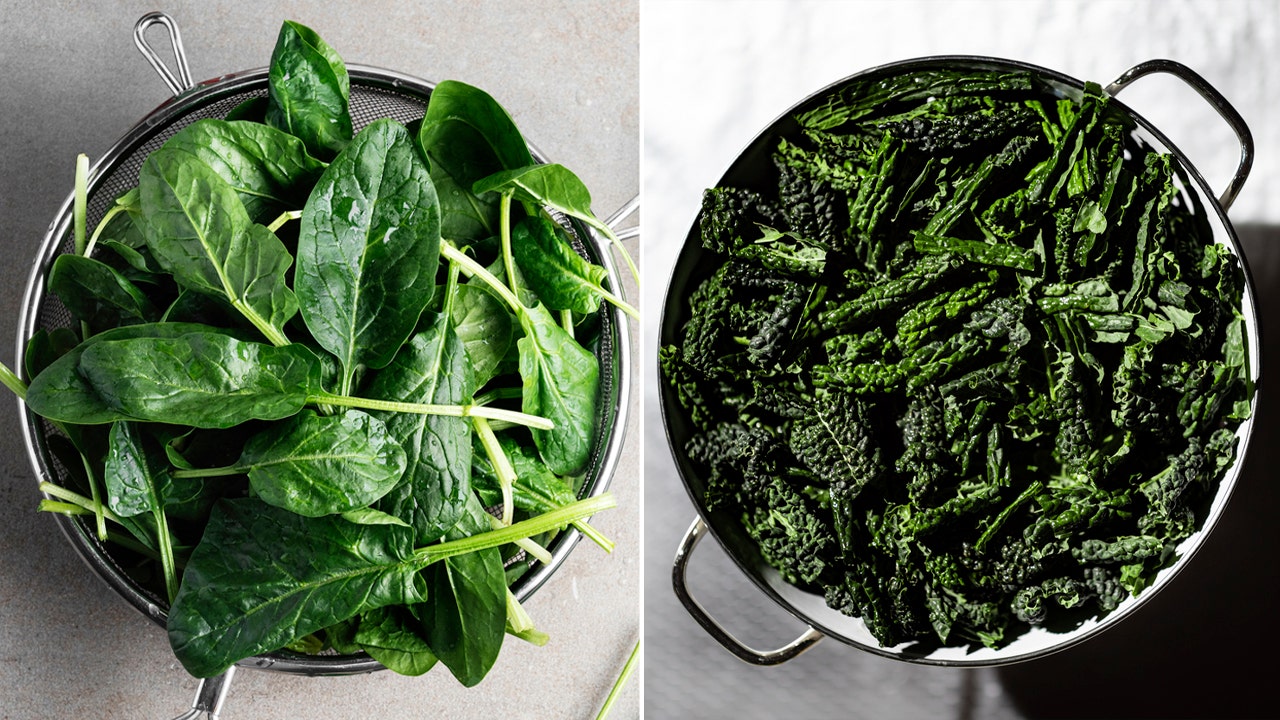
Spinach and kale may sometimes be pitted against each other in a friendly rivalry in the realm of healthy eating.
But is one of these greens a winner over the other?
“Spinach and kale are both healthy and incredibly nutrient-dense dark leafy green vegetables,” Stephanie McKercher, a registered dietitian and plant-based recipe developer in Denver, Colorado, at GratefulGrazer.com, told Fox News Digital.
PASSOVER BRISKET: HOLOCAUST SURVIVOR’S RECIPE HOLDS ‘SPECIAL SIGNIFICANCE’ AMID JEWISH HOLIDAY
“While similar, there are a couple of key differences in the nutrient compositions of each,” McKercher added.
Natalie Gillett, a New Jersey-based registered dietitian and owner of NatalieGillettNutrition.com, echoed that sentiment, noting that the two leafy greens have distinct healthy benefits — which “merit giving both of these power foods a regular place in your fridge.”
Romane Guerot, a registered dietitian, sports nutritionist and lifestyle coach based in Paris at Foodvisor.io/en, said kale is a good source of fiber, vitamins A, C, and K, as well as calcium.
She added about its “rival,” “Spinach is a good source of iron, potassium, vitamins A, C, and K, as well as folate and magnesium.”
Read on to learn the nutrition profiles of kale and spinach — and find out if one reigns supreme.
Nutrition specifics of kale
Kale is a fiber powerhouse. It’s brimming with vitamin C, too.
FOOD UNDER THE RADAR: 7 WEIRD WINTER VEGETABLES AND WHY THEY’RE SO GOOD FOR YOU
“Kale is higher in fiber and contains more vitamin C than spinach,” said McKercher.
“Vitamin C works as an antioxidant. It aids the immune system and helps with iron absorption.”

Both spinach and kale have beneficial nutrition specs, according to nutrition experts. Read on for more about this leafy-green food debate. (iStock)
In terms of other notable vitamins, kale and spinach are both rich sources of vitamin K, said McKercher, which is important for bone health and blood clotting.
FRUITS AND VEGETABLES RIPE IN SPRING AND HOW YOU CAN INCORPORATE THEM INTO YUMMY SEASONAL DISHES
Gillett also singled out kale for its vitamin A content, “which supports vision, immune system and tissue health,” as well as the mineral potassium, involved in muscle contractions and in helping to maintain healthy blood pressure.
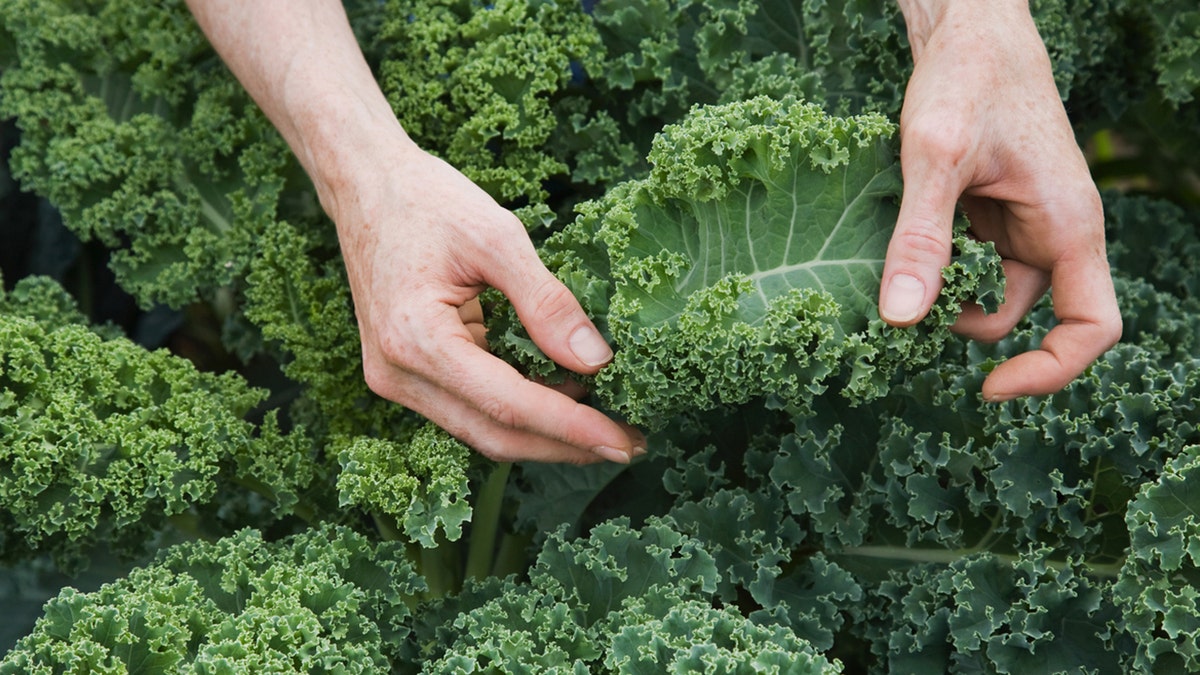
As you shop for kale or spinach at your local grocery store, steer clear of brown or yellow leaves. Bright green leaves will indicate freshness, according to nutrition experts. (iStock)
Gillett is also a fan of just how chock-full of fiber kale is.
“One cup of cooked kale provides almost five grams, which is nearly 20% of the daily recommendation of fiber,” she said.
5 DELICIOUS FOOD PRANKS THAT PROVED A HUNGRY PUBLIC CRAVES EVERY MORSEL OF NEWS
As for other factors that set kale apart from spinach, Gillett shared that kale is a part of the cruciferous vegetable family.
“Cruciferous vegetables are notable for their high content of glucosinolates, which may be protective against cancer,” she said, pointing to research published on the National Cancer Institute’s website.
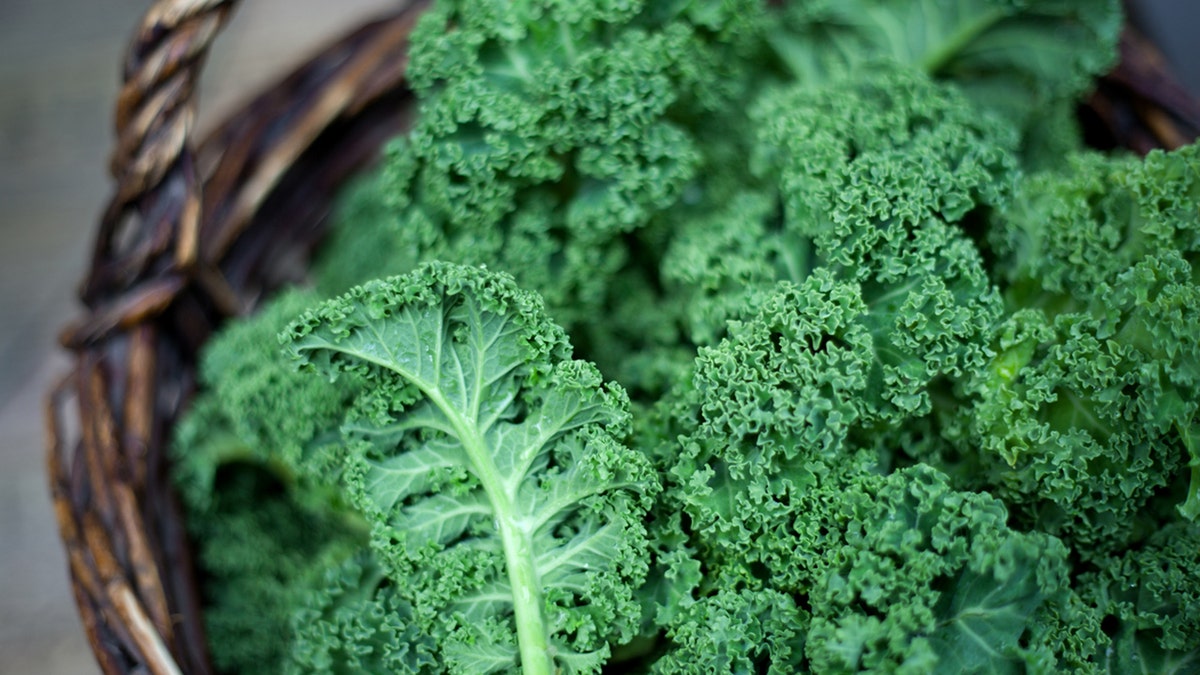
Cooked kale (uncooked kale is pictured here) contains around 1 milligram of iron while cooked spinach has approximately 3.6 milligrams of iron. (iStock)
Last but not least, kale is also a good source of antioxidants, “which can help protect the body from damage,” said Guerot.
“Kale is one of the healthiest vegetables around and one way to be sure to enjoy the maximum nutrition and flavor from kale is to cook it properly,” notes the Amazon description for “Cooking with Kale,” a 2015 hardcover book by Rena Patten, who is based in Sydney, Australia.
Nutrition specifics of spinach
Spinach is a much-praised veggie for good reason.
SECRETS OF ORDERING WISELY AT A RESTAURANT WHILE DIETING: NUTRITION EXPERTS SHARE BEST TIPS
“Much like kale, spinach boasts impressive levels of vitamins K, C and calcium. While kale contains folate, spinach has it beat with more than double the amount for the same size serving,” said Gillett.
She added that folate supports cell division and helps prevent birth defects during pregnancy.
“Compared to kale, spinach is notable for containing more iron, which is vital for blood cells, energy and growth,” she said, adding that a 100-gram serving of cooked spinach has approximately 3.6 milligrams of iron, whereas the same amount of cooked kale contains around 1 milligram of iron.
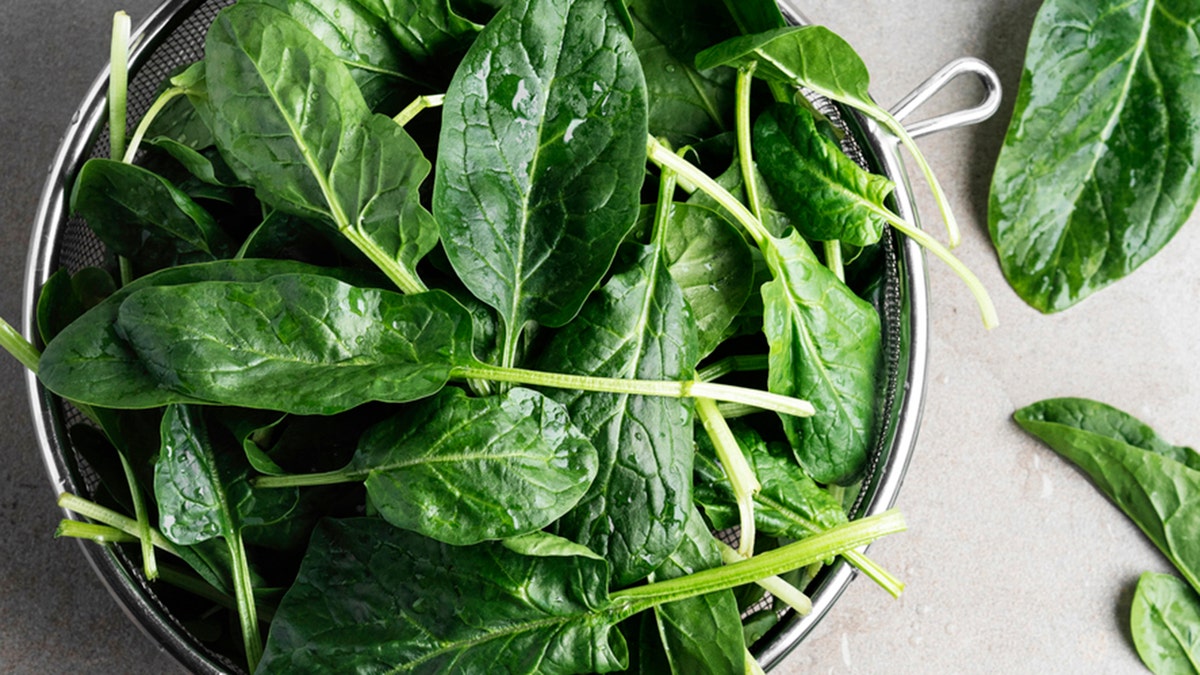
Spinach can be eaten raw, cooked or added to a smoothie. (iStock)
“Spinach offers a nice amount of essential nutrients, including iron, vitamins A, K, and folate,” said Guerot.
She said the iron found in spinach “is vital in preventing anemia.”
APPLES VS. ORANGES: WHICH OF THESE FRUITS IS ‘BETTER’ FOR YOU?
Like kale, spinach is also high in fiber, “which aids in digestion and can help with weight management,” said Gillett.
Medical News Today notes that “spinach is rich in iron, vitamin C and E, potassium, and magnesium. As part of a nutritious diet, it can help support immune function, aid the digestive system [and] may even have anticancer properties.” It also points out that “certain individuals may need to eat this vegetable in moderation.”
So is kale or spinach the healthier choice?
Like other nuanced nutrition debates, there’s no clear winner in the battle between kale and spinach.
“Both spinach and kale are exceptionally healthy and offer unique advantages,” said Gillett.
She said the choice between them largely depends on individual preferences and dietary needs.
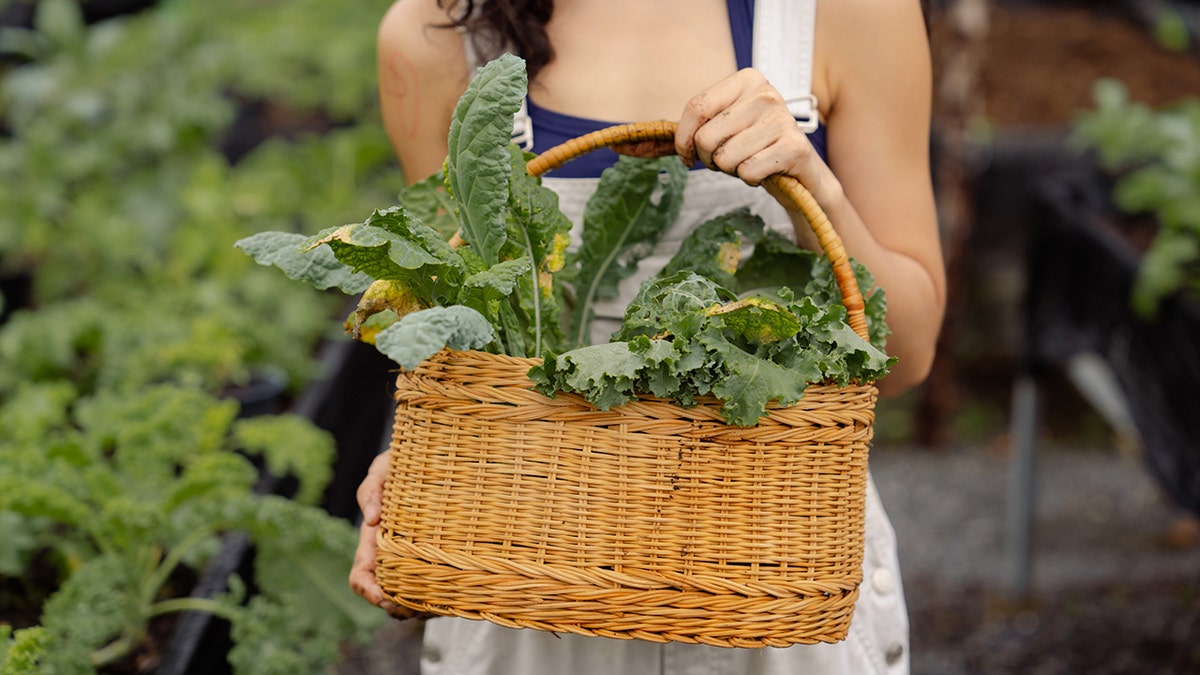
Kale is high in fiber, plus vitamins K and vitamin C, according to Guerot. (iStock)
Both of these leafy greens contain a variety of nutrients that are essential for good health, Guerot stressed.
THE BEST VEGETABLES FOR YOUR HEALTH, ACCORDING TO NUTRITIONISTS
“However, if you are looking for a food that is particularly high in fiber, vitamins K and C, kale is a better choice,” she said.
“If you are looking for a food that is particularly high in folate and a source of iron, and vitamins A and E, then spinach is a better choice.”
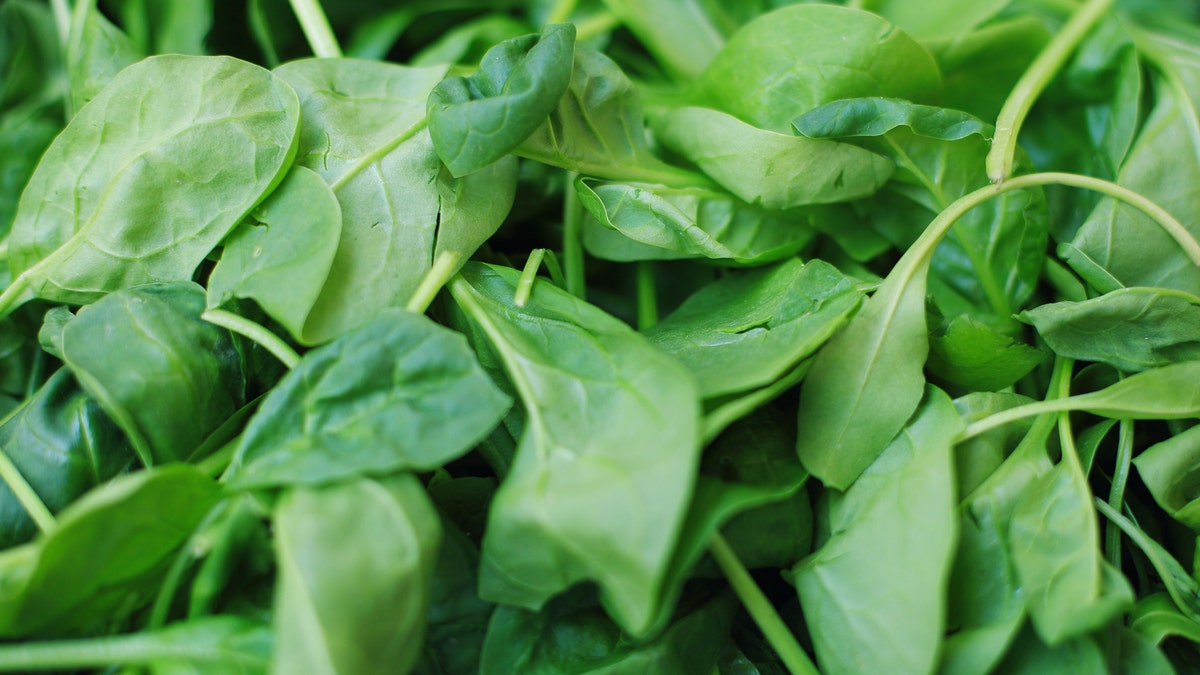
The products have only been distributed in Eastern Canada and in the U.S. states of New York, New Jersey, Delaware, Connecticut, Maryland and Pennsylvania. (iStock )
Ultimately, per Guerot, the best way to get the most nutrition from your diet is to eat a variety of fruits and vegetables, including both spinach and kale.
When it comes to fruits and veggies, the “eat-the-rainbow” adage is accurate.
“Eating a variety of vegetables gives your body the different nutrients it needs to thrive. Variety also makes meals more interesting and keeps boredom at bay,” said McKercher.
THESE ARE THE WORST COOKING OILS FOR YOUR HEALTH, EXPERTS SAY
“Because spinach and kale are nutritionally similar, you could also opt for whichever veggie you enjoy more,” said Guerot.
Cooking with kale and spinach
In general, Gillett encouraged people to “experiment with both spinach and kale in your meals to enjoy their distinct flavors and health benefits.”
Both spinach and kale can be eaten raw, cooked, or juiced.
CLICK HERE TO SIGN UP FOR OUR LIFESTYLE NEWSLETTER
“They can be added to salads, soups, smoothies and stir-fries,” Guerot said.
“When choosing spinach or kale, look for leaves that are fresh and green. Avoid leaves that are yellow or brown,” said Guerot.

Kale can be chopped up and used in a salad as an add or base. Kale can also be blended into a smoothie or juiced with other fruits and vegetables for a nutritious snack. (iStock)
When buying fresh spinach or kale, know that the leafy greens can be stored in the refrigerator for up to five days, she also said.
CLICK HERE TO GET THE FOX NEWS APP
That said, buying frozen spinach and kale is also a nutrient-dense and budget-friendly option.
You can also keep frozen spinach or kale in the freezer for months at a time without worrying about any spoiling.
In terms of meal prep, McKercher suggested cooking either spinach or kale with a can of chickpeas and serving it with tahini sauce.
Check out her recipe on her Instagram page, @gratefulgrazer.
For more Lifestyle articles, visit www.foxnews.com/lifestyle.
